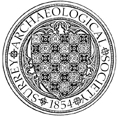S22555 Old Houses Chiddingfold
Submitted by twilcock on
None

Submitted by twilcock on
None
Submitted by twilcock on
None
Submitted by twilcock on
None
Submitted by twilcock on
None
Submitted by twilcock on
None
Submitted by twilcock on
None
Submitted by twilcock on
None
Submitted by twilcock on
None
Submitted by twilcock on
None
Submitted by twilcock on
None
Text: GUILDFORD MUSEUM
Thirteenth century tiles from Chertsey Abbey: a scene from the story of St. Trinstan. Lent by the Surrey Archaeological Society.
Photo: Jane Bown
Langham, Printer, Farnham